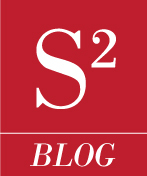Italian vocabulary: Theatre and Opera
This week we celebrate the Italian Language around the World, the many ways it is spread and taught, appreciated and learnt. The 19th edition of The Week of the Italian Language in the World is dedicated to Italian on the Stage. And what’s more Italian – with its passionate characters and high drama – than opera?
Moreover, with occasion of the recent production of Puccini’s Turandot at the Canadian Opera Company, we’d like to provide you with some useful terms and nouns to delve into the world Italian Opera.

Teatro San Carlo in Naples
Italian glossary for the Stage
Argomento: it is the plot of the opera.
Aria: it is a self-contained piece for one voice, with or without instrumental or orchestral accompaniment, normally part of a larger work. It is one of the peaks in an opera. Vocal arias can be found in cantatas and oratorios as well.
Baritono: male singing voice whose vocal range lies between the bass and the tenor, often given to a villain.
Basso: male singing voice and has the lowest vocal range of all voice types. Categories of bass voices vary according to national style and classification system. Italians favour subdividing basses into the basso cantante (singing bass), basso buffo (“funny” bass), or the dramatic basso profondo (low bass).
Bel canto or belcanto: it is a style of singing, often rich and velvety that requires a particular technique to spin the notes and make them resonate and vibrate.
Cabaletta: is a two-part musical form particularly favored for arias in 19th century Italian opera in the belcanto era until about the 1850s during which it was one of the era’s most important elements. More properly, a cabaletta is a more animated section following the songlike cantabile.
Coloratura: it is a highly elaborate and adorned melody performed by sopranos and mezzos.

Great Italian soprano Luciana Serra as the Queen of the night in Mozart’s The magic flute
Contralto: is the lowest female, very similar to a Controtenore in terms of range.
Controtenore (soprano or male alto): male singing voice whose vocal range is equivalent to that of the female contralto or mezzosoprano voice types. Thanks to a revival of Baroque music, countertenors are receiving more attention and praise these days and years, being able to cover and perform almost the entire repertoire once sung by castratos.

The most famous Italian castrato of all time, Carlo Broschi, known as Farinelli
Costumista: costume designer, sometimes s/he help sew the costumes.
Direttore di scena o regista: the director, responsible for the actions and movements that take place on stage.
Direttore d’orchestra: the orchestra conductor in the pit.
Finale: the concluding part of an act or of the entire opera.
Golfo mistico (mystic gulf), buca dell’orchestra o fossa: in English, the pit, where the orchestra plays.

The orchestra pit
Leitmotiv: it is a dominant recurring theme. It is an associated melodic phrase or figure that accompanies the reappearance of an idea, person, or situation especially in a Wagnerian music drama.
Librettista: in prose theatre, s/he would be the playwright. In opera, s/he is the person who writes the words the performers will sing.
Libretto: it is the text of an opera.
Loggione o balconate: the section in an Italian theatre above the highest row of boxes, with cheaper seats. The loggione (the gallery) is traditionally crowded with the most critical opera-goers, known as the loggionisti, who can be ecstatic or merciless towards singers’ perceived successes or failures.
Maestro: title of honour used to address the conductor.
Melodramma: the very first form of musical theatre, also known as Baroque opera.
Mezzosoprano: female voice, lower and warmer than a soprano, often used for secondary characters.
Opera (lirica): a piece of theatre set to music.
Opera comica: a work that entails spoken dialogues: in French: opéra comique; in German: Singspiel, in English: ballad opera. The subject can be serious too.
Operetta: literally a little or short opera, it is usually shorter than an opera, presents a light subject and more spoken dialogues rather than recitativi, and some dance pieces.
Ouverture o Preludio: the musical piece that launches an opera, often featuring some of the themes that will recur throughout the entire opera.
Prima Donna: the female protagonist and leading role in the performance.
Recitativo: a group of lines sung more freely than an aria, similar to a spoken dialogue, helps make the plot move on and precede an aria.
Sipario: heavy velvet curtain that divides the stage from the rest of the theatre.
Soprano: the highest female voice, voce femminile più alta, è quella dei grandi ruoli di repertorio.

Italian opera Aida by Giuseppe Verdi
Teatro all’italiana: different from the English theatres, an Italian-style theatre presents a shoe-horse shape, an orchestra section (called platea) and boxes (palchetti). One central major box is called palco d’onore o palco reale, royal box.

An Italian opera house
Tenore: It is one of the highest of the male voice types. One of the most famous tenors of all time was Luciano Pavarotti.
Tessitura, also known as Registro: the most acceptable and comfortable vocal range for a given singer or less frequently, musical instrument , the range in which a given type of voice presents its best-sounding (or characteristic) timbre.


